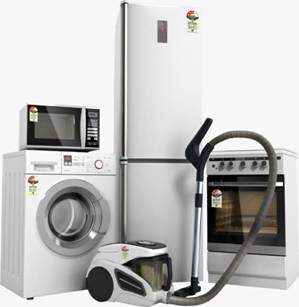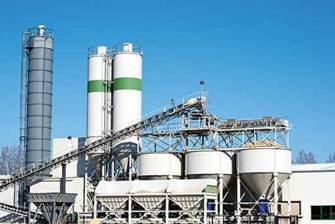Ministry of Power
Implementation of Energy Efficiency measures in India saves substantial amount of CO2 emissions in the country
Perform Achieve and Trade (PAT) scheme, targeting carbon emission reduction in 13 energy intensive sector, leads to energy savings of ~ 17 MTOE and results into mitigation of about 87 million tonnes of CO2, per year
Standards and Labeling (S&L) Program results into estimated electricity savings of 56 Billion Units during 2020-21, worth over Rs. 30000 crore
Posted On:
08 JUN 2021 9:08PM by PIB Delhi
The Ministry of Power is implementing measures to save energy with an objective to reduce CO2 emission levels in the environment from industries, establishments and by using equipment/ appliances. In this regard, Perform Achieve and Trade (PAT) Scheme is a key programme for large industries and establishments. This scheme aims to enhance the cost-effectiveness of energy savings by upgrading technologies or by taking in-house actions to minimize energy consumption. The scheme provides mandatory targets for the identified Large Units and the excess energy saved by them is issued as Energy Saving Certificate, which are tradable instruments. The different industries and establishments are assigned separate energy efficiency targets based on their levels of energy consumption and the potential for energy savings.
By the year 2020 the scheme coverage has been extended to 13 most energy intensive sectors in the country including Cement, Iron and Steel, Fertilizer, Thermal Power Plants, Refineries, Petrochemicals, Railways and others. This initiative is currently leading to energy savings of about 17 MTOE (Million Tonnes of Oil Equivalent) and has resulted into mitigation of about 87 million tonnes of CO2, per year, a figure close to total CO2 emissions of country like Bangladesh.
Appliances are the main points for electricity consumption at household level or at office and commercial establishments. In view of the rapid growth in high energy consumer goods, the demand for electrical energy has been increasing every year. This rising demand can be optimized, if the consumers prefer high efficiency appliances. To enable market transformation of efficient products, Standards and Labeling (S&L) Program was introduced by the Bureau of Energy Efficiency (BEE). The objective of S&L is to provide the consumers, an informed choice about the energy savings potential and thereby the cost saving due to the products available in the market. The scheme includes display of energy performance labels on key energy consuming equipment & appliances, with stipulation for minimum energy performance standards. The scheme has now included 28 appliances till March 2021 and over 15000 models of energy efficient products have been awarded Star labels, a popular symbol among the consumers for endorsing energy savings. The impact of using a huge number of efficient products by the citizens have resulted into an estimated electricity savings of 56 Billion Units during 2020-21, worth over Rs. 30000 crore. This initiative has been effective in reducing the CO2 emissions of approx. 46 Million Tonnes every year. Such steps have become very effective and a simplified approach is considered more useful to promote energy efficiency globally. Many countries have followed this labeling programme, thereby reaping benefits of energy savings and also in reducing CO2 emissions.

Speaking about the scheme, an official from the Bureau of Energy Efficiency (BEE) said that BEE is glad to be functioning as the “Mission Directorate” under the aegis of Ministry of Power, Government of India for such impactful programmes, which entail huge benefits to both the environment and the society. The blend of regulatory as well as market based policies in various sectors would offer promising outcomes, if all the energy efficiency measures are adopted by the potential Consumers of the economy. This would further endorse the Government’s significant efforts in enabling mitigation of CO2 emissions towards maintaining environmental integrity and meeting our climate commitments.

Carbon Dioxide (CO2) is the well-known greenhouse gas on our planet Earth. Rapid increase in its concentration in atmosphere is major cause of global temperature rise which in turn leads to many environmental and healthcare problems. The ‘greenhouse effect’ works in case of CO2 when solar radiation hits the surface of the earth, part of the heat escapes the atmosphere while balance heat gets trapped which in turn, raises the earth’s temperature. This is a phenomenon popularly known as global warming. This primarily results in severe impact on climate change, which has a ripple effect over all natural ecosystems, and by extension, all industries and people around the globe.
About BEE
The Government of India has set up the Bureau of Energy Efficiency (BEE) on 1st March 2002 under the provision of the Energy Conservation Act, 2001. The mission of the Bureau of Energy Efficiency is to assist in developing policies and strategies with a thrust on self-regulation and market principles with the primary objective of reducing energy intensity of the Indian economy within the overall framework of the Energy Conservation Act, 2001. This will be achieved with active participation and collaboration of all stakeholders, resulting in accelerated and sustained adoption of energy efficiency in all sectors.
BEE’s span of Energy Conservation and Efficiency efforts covers areas such as Appliance, Buildings, Transport, key Demand Side Management programs in Agriculture and Municipalities and the Industry and other Establishments.
***
SS/IG
(Release ID: 1725448)
Visitor Counter : 3469